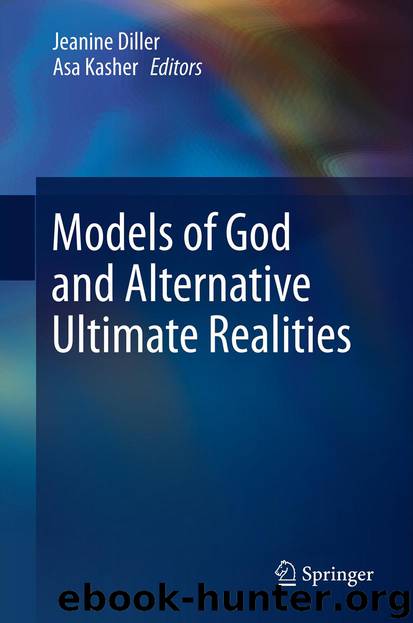Models of God and Alternative Ultimate Realities by Jeanine Diller & Asa Kasher

Author:Jeanine Diller & Asa Kasher
Language: eng
Format: epub
Publisher: Springer Netherlands, Dordrecht
Enlightenment Theism: John Ray
With Enlightenment science a radical shift takes place which was anticipated by the likes of Bonaventure and Scotus. Of immense importance would be the practical effect of the geological sciences upon the popular imagination. What did it mean that the landscape in various North American places was replete with fossils – was it a region of radical degradation? Or was it a place rich in natural resources because the earlier presence of abundant life had enriched it? But once the land of human habitation itself had become geometrically analyzed and measured, God had to become one who was and is the original scientist who creates his cosmos rather than merely observes it and shapes it technologically. The geometricity of things corresponded with the spatiality of experience and therefore the primary context of revelation and encounter with God. Aristotle, for all his empiricism, had established a closed cosmos, but the reasoning of the new science demanded an open one; not one of utterly random events but of dynamic unpredictable ones based upon real spontaneity that the medievals intuited but could not incorporate fundamentally within their systems. Thus, when Copernicus asserted against all disputants the heliocentric universe, every systematic paradigm was rendered obsolete. It was only the diversification of human study and the multiplication of its participants that rendered church discipline of human affairs in the West impossible. Nothing could avert it, not even the Inquisition – in those regions where it could be instituted.
What changes from the medieval to the modern conception of divine governance is threefold: (1) change in argumentation from causality to design with an analogical shift of emphasis from artistry to engineering, a ‘mechanization’ of conceptuality; (2) a change in how God’s knowledge of the world is conceived, rather than through the radical contingency, God as designer knows the operations of the world as an observer of a completed, self-perpetuating mechanism according to his purpose but represents a shift in divine ‘experience’; (3) divine immanence and transcendence has changed in terms of divine distance or self-same substance with the cosmos itself (if we connect with Spinoza’s panentheism). Although the Deists will interpret the engineering and mechanization as the model of nature differently with respect to revelation and the essence of God, it is helpful to first cite an orthodox theologian – physic-theology – whose fascination and apologetics for divine creation works just as well with divine distance.
Among the theists, one of the great contributions was John Ray’s The Wisdom of God Manifested in the Works of the Creation (1691).1 True to the insightful Alasdair McIntyre’s characterization of English scientific knowledge as ‘encyclopaedic’,2 Ray proceeds to engulf the reader of his widest ranging reflections upon all the nodal points of his Royal Society colleagues’ discoveries and their meanings in true physico- theological fashion. Emphasizing God’s skill in producing the ‘contrivance’ of creation, full as it is down to the tiniest detail, every organism perfectly adapted and provisioned in the well-functioning universe. For Ray, it is the sheer abundance of zoological variety and detail that enamours him.
Download
This site does not store any files on its server. We only index and link to content provided by other sites. Please contact the content providers to delete copyright contents if any and email us, we'll remove relevant links or contents immediately.
The Art of Coaching Workbook by Elena Aguilar(50109)
Trainspotting by Irvine Welsh(21027)
Twilight of the Idols With the Antichrist and Ecce Homo by Friedrich Nietzsche(18302)
Fangirl by Rainbow Rowell(8787)
Periodization Training for Sports by Tudor Bompa(7922)
Change Your Questions, Change Your Life by Marilee Adams(7378)
This Is How You Lose Her by Junot Diaz(6440)
Asking the Right Questions: A Guide to Critical Thinking by M. Neil Browne & Stuart M. Keeley(5357)
Grit by Angela Duckworth(5301)
Red Sparrow by Jason Matthews(5198)
Paper Towns by Green John(4800)
Room 212 by Kate Stewart(4739)
Ken Follett - World without end by Ken Follett(4446)
The Sports Rules Book by Human Kinetics(4079)
Housekeeping by Marilynne Robinson(4065)
Double Down (Diary of a Wimpy Kid Book 11) by Jeff Kinney(3929)
Papillon (English) by Henri Charrière(3907)
The Motorcycle Diaries by Ernesto Che Guevara(3788)
Exercise Technique Manual for Resistance Training by National Strength & Conditioning Association(3788)
